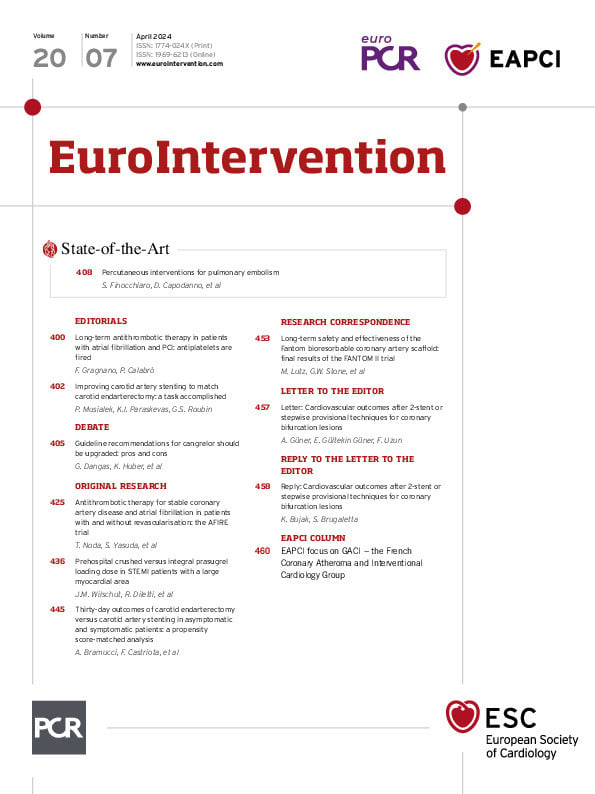We have recently read, with great interest, the article by Bujak et al entitled ‘‘Clinical outcomes following different stenting techniques for coronary bifurcation lesions: a systematic review and network meta-analysis of randomised controlled trials’’1. We thank the authors for their comprehensive and meticulous meta-Âanalysis, which included 24 randomised clinical trials (RCTs; 6,890 patients) comparing the clinical outcomes of different revascularisation strategies for the management of coronary bifurcation lesions (CBLs). However, we believe several major drawbacks need to be addressed.
The reasons for our concern are as follows:
First, several investigators reported that the proximal optimisation technique (POT) was associated with a reduction in major cardiovascular events or stent thrombosis. Potential differences in the use of POT23, regardless of the characteristics of the CBLs and the application of the technique, may have affected the results of the RCTs.
Second, the antiplatelet treatment regimen after bifurcation stenting varied among the RCTs in this meta-analysis. In this meta-analysis, several RCTs included ticagrelor and prasugrel as antiplatelet choices, while most other relatively older studies used clopidogrel and ticlopidine1. A recent network meta-analysis showed that ticagrelor and prasugrel outperform clopidogrel in reducing poor clinical outcomes4. We believe that the selection of a dual antiplatelet agent also requires special analysis for CBLs in this meta-analysis. Therefore, readers may wonder whether a more detailed analysis has been done on this subject.
Third, heterogeneities in the features of CBLs within each of the RCTs in the current meta-analysis are highly variable1. Several RCTs, particularly the DKCRUSH and the DEFINITION trials, included more complex cases such as those described in the DEFINITION criteria, which limited the applicability of the results to the whole patient population.
Fourth, the included RCTs were conducted in the period up to 2022, and since then, there have been significant improvements in secondary prevention, advances in stent design, selection of antiproliferative agents in stents, iterations in bifurcation techniques, and functional testing of lesions. In several RCTs, when >1 technique was used, events were attributed to the bifurcation technique that was most often performed1.
Lastly, arterial access route (radial or femoral) has been reported as a potentially confounding variable in only a limited number of RCTs1. This may prevent comprehensive conclusions regarding the results of treatment strategies.
Conflict of interest statement
The authors have no conflicts of interest to declare.

